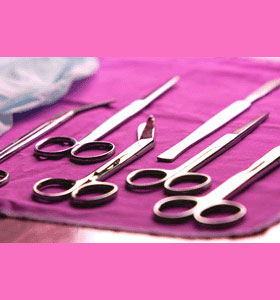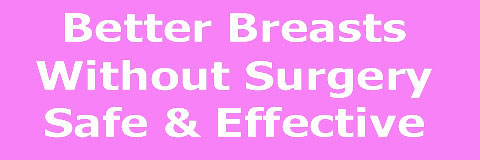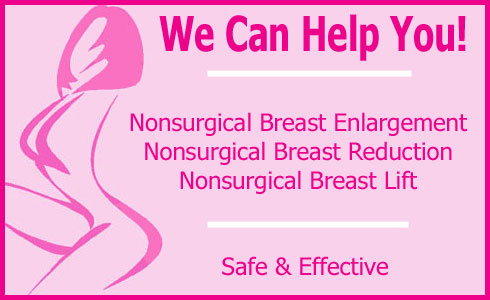
Breast reduction recovery is a long road for most women, even though the worst part ends with the success of the surgery. Breast reduction surgery is a complicated and invasive procedure which must do a tremendous amount of damage to healthy tissue in order to cosmetically re-sculpt the breasts. While the recovery process is an extended one compared to many other cosmetic surgery procedures, the worst is over the moment you awake from your procedure knowing that you are on the road to having beautiful new breasts.
This essay provides useful tips to patients who are recovering from reduction mammoplasty surgery.
Breast Reduction Recovery Timeline
Breast reduction removes a large amount of tissue and involves several incisions. Surgical reduction is traumatic to the breasts and they will take quite a long time to fully heal from the experience.
When you wake up from surgery, you will already be wearing a compression garment and will feel very groggy, sore and generally awful. You might have a nauseous feeling from the anesthetic. It is crucial to remember that you made it through your operation and now it is time to concentrate on the healing process.
You might have external sutures or maybe surgi-strips closing your incisions. There might be fluid drainage tubes placed in your breasts or under your arms. These will be removed by your doctor in a few days. External sutures will be removed in a few days to a few weeks, depending on procedural specifics.
Be very careful not to disturb your new incisions, since they will be extremely sensitive the first few days.
Sleeping During Breast Reduction Recuperation
Sleeping might be one of the hardest activities to accomplish immediately after surgery. Make sure to use lots of pillows to prevent yourself from rolling and do not sleep on your stomach.
It is a good idea to prop yourself up on several pillows placed under your upper back, to allow fluids to drain and prevent swelling and clot formation in the surgical region.
If you sleep with a partner, remember to keep extra space between the two of you, to prevent them from rolling on your wounds at night.
Although sleeping might be awkward and difficult, you need to get lots of rest in order to maximize healing potential. Find a relatively comfortable position and try to acclimate to it as soon as possible.
Warning Signs During Breast Reduction Recovery
While recovering, it is vital to constantly monitor your surgical wounds, as well as your general health. The following are signs which might indicate a potentially serious complication:
Redness, abnormal pain, a hot feeling or foul odor around the incisions might indicate infection.
Seroma or hematoma formation might occur if fluids build up in the breast.
Sudden bleeding can indicate a compromised incision.
Fever, nausea, chills or vomiting can indicate a variety of serious health concerns.
Drastic tissue color change, lighter or darker, can indicate a very serious complication, such as necrosis.
If you notice any of these symptoms, contact your doctor or emergency room immediately.
Normal Symptoms During Breast Reduction Recovery
There are a variety of symptoms associated with the breast reduction recovery process. Although these symptoms are uncomfortable and might be disturbing, they are natural and normal and should not be a cause for concern:
You will have severe pain after surgery. This pain will last for a few days to a few weeks, slowly alleviating in intensity. It is normal to have bouts of sudden sharp pain, or dull constant pain, for several weeks to several months postoperatively.
Bruising on the breasts might be severe. This is normal after such surgical trauma.
Your breasts will be swollen and misshaped. Swelling will continue for weeks and might cause additional discomfort.
Breast and nipple sensation will be reduced due to trauma and swelling. The sensation might come back 100% with time, or might come back partially, or not at all. Complete loss of breast sensitivity is rare, but it is possible.
Breasts will not find their new permanent form for up to 6 months. During this time, they might be tight, high positioned, square looking or simply not normal. Be patient, they will eventually find an aesthetically-pleasing shape.
Assistance During Breast Reduction Recovery
You will be very limited physically, especially for the first few days postoperatively. You will require assistance with almost everything you need to do for some time and will require limited help for several weeks.
Make sure you have someone around to aid you, rather than attempt to do anything which will compromise your results. You will be forbidden to lift any considerable weight or do any strenuous activity for several weeks. You will likely be told to avoid bringing your arms over your head. This will make certain activities impossible, such as washing your own hair. Make sure to have a plan to accomplish all the things you require, but can not do for yourself.
In contrast, you should stay active once you feel a little better. Perform non-strenuous movements and walk around often. Activity will increase circulation and stimulate the healing response. Lying about will certainly lead to a longer and potentially problematic breast reduction recovery process.
Completely Recovering from Breast Reduction Surgery
There are some proactive things you can do to help ensure a complete recovery.
Always use your compression bra as advised by your doctor. The device will only work if you wear it, regardless of how uncomfortable it might feel at first.
Using moisturizing lotion on the breast tissue will make your recovery time more comfortable. Make sure not to get any lotion in or near your incisions, until they are fully healed.
Stay active, but be very careful with all your movements. Do not do anything which will jeopardize your results.
Stay healthy. Eat right and do not use drugs or alcohol while recovering. A compromised body will not heal well.
Your doctor might advise cold compresses to reduce swelling. These can be very effective and might also help relieve discomfort in your breasts.
While your incisions are fresh, be very, very careful bathing. You do not want to get the incisions wet or allow the general area to remain moist for any length of time.
Take any antibiotics exactly as prescribed, since these are important to fight off the risks of infection.
Use extreme caution with pain medications. Try to take them as little as possible and do not stay on them any longer than absolutely necessary. Using powerful pain medicines for even a few weeks can cause you to develop a powerful dependency, which might cause serious long-term health and lifestyle issues. We can’t stress this point enough: Be careful. Switch to non-prescription pain medications as soon as possible and discontinue these when you can. Remember, pain medications are poisonous to your body.
Once your incisions have healed over, you can begin to use scar reduction methods. Make sure to ask your doctor about these therapies prior to use.
The most important factors to consider when recovering from breast reduction surgery are the emotional ones. You will likely have times of emotional ups and downs during your recovery process. This is normal. Be confident that your decision to pursue cosmetic surgery was the right choice.
The healing process is long and tiresome, which can make many women reconsider if they did the right thing. Time will pass and your pain will fade. Time will continue to pass and your results will look better by the day.
Eventually, a time will come when you can embrace your decision as one of the best you have ever made in your life. You will be fully healed, good as new and have the added benefit of renewed breasts which will be so much easier for you to manage. Life will continue and you will move forward leaving the considerable baggage of your old breasts far behind.





